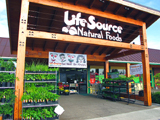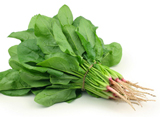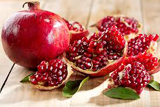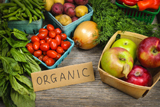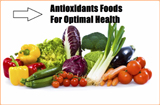Nutrition and diet
Eating for Health: a new system, not another diet — I
Eating for Health is a way of life. It reflects a relationship to food based on consciousness, gratitude and sound science.
— Dr. Ed Bauman.
Abstract
Eating for Health is a system, not a diet, developed by Dr. Ed Bauman, as an alternative to the United States Department of Agriculture (USDA) dietary recommendations and other one-size-fits-all dietary approaches. It seeks to strategically develop food plans for people rather than having them eat according to a food model that has worked for some but not all people. It serves to clear up the confusion engendered by the vast array of supposedly very different popular diets. It features fresh, whole foods that align with people’s needs, preferences, ethnic and cultural backgrounds, with attention paid to changes in seasons, situations, aging and health challenges. The goals of this system are to show the average person how they can obtain optimal amounts of macro-nutrients (proteins, fats and carbohydrates), micro-nutrients (vitamins and minerals) and phyto-nutrients (plant alkaloids with protective value) from food and thereby be less dependent on dietary supplements to fulfil nutritional needs for growth and repair as well as for recovery from injury and illness. Eating for Health emphasises the intrinsic pleasure of enjoying delicious whole foods on a daily basis, eaten mindfully, to nourish not only one’s physical self, but also one’s emotional, mental and spiritual being.
Eating for Health: philosophy
In Eating for Health, we embrace two powerful maxims — ‘Food is the best medicine’ and ‘Know thyself’ — and create a synergy that opens the way to wellness and service.
The Eating for Health model provides a map for healthful eating that draws on a wide array of traditional and modern dietary principles and practices. It aims to teach people to better understand how the chemicals, additives, processing, packaging and preparation of much of the food they have eaten has contributed to diminished health, while providing guidelines that encourage people to create and enjoy meals based upon fresh, whole foods that suit their cultures, ethnicities, budgets and preferences. Genetics, biochemistry, psychology, physiology, age and sensitivities all influence one’s optimal choices of food. Clearly, one size does not fit all with nutrition or shoe selection. It never has and never will.
Proper nutrition is a major form of health investing. When a person consistently eats poor quality food, they deplete nutrient reserves in their bones, soft tissues, organs, glands, skin and hair. They wear the results of being overdrawn nutritionally — an unhealthy appearance — and feel the warning signs of ill health, which typically manifest as fatigue, pain and mood-swings.
The Eating for Health approach is to share current, non-biased research on the health benefits of whole foods, botanicals, nutrient supplementation, lifestyle and exercise to enable individuals to recognise that they have a great power in what they choose to eat, which will impact their energy, mood, body composition and the quality and duration of life. Since every bite of what one eats and each sip one drinks becomes the matrix of their cells, tissues, organs, mind and body, eating a variety of fresh, whole foods on a daily basis is an essential form of self-care and preventive medicine.
Eating for Health is also founded on the principle of sustainability, both in terms of what dietary patterns will sustain individuals on a long-term basis and what food production methods will help sustain or improve the health of the planet’s soils and waters. And as a holistic practice, Eating for Health also looks to various spiritual traditions that place great importance on mindful eating practices and social connection. It was designed to help nutrition professionals guide their clients toward the most nutritionally sound approaches for them as individuals. By eating well consistently, people learn what foods best nourish and sustain them during stressful changes that threaten health and impede recovery.
Eating for Health concepts
The Eating for Health programme promotes high quality whole foods, suited to individual needs, tastes and ethnicities. It takes into consideration biochemical individuality and lifestyle, the factors that make all of us unique beings with unique requirements. This flies in the face of many current dietary trends, which often cater to the public craving for structured diets and strict rules. Thus we see several popular trends — the Paleolithic and ancestral diets; Mediterranean, vegetarian and vegan diets; low-carbohydrate, high protein; low-fat; and the more restrictive diets such as Gut and Psychology Syndrome (GAPS); allergen-free; and FODMAPs (omission of fermentable sugars). All of these can indeed play an important role in health promotion — for some people — and the Eating for Health philosophy makes room for the concepts engendered by them all, but with a flexible, non-dogmatic approach.
Nutrition bandits and heroes
Eating for Health embraces a concept coined by Dr. Bauman called nutrition bandits. These are the stimulants, sugars, refined grain products, conventional dairy and meat products, artificial sweeteners and hydrogenated oils in our overly processed, nutrient-depleted, industrially produced American food supply. These are the foods we find on our grocery-store shelves and in chain and fast-food restaurants. Such foods are formulated in laboratories to over-stimulate our taste-receptors and quite literally to addict us to processed food flavours and textures (1), so that we are no longer satisfied by the crunch of a carrot, the refreshingly sweet juice of a fresh mango or the zing of fresh garlic.
While it’s easy to over-eat nutrient-poor, sugary, salty, greasy snack foods, you can enjoy nutrition heroes, another important Eating for Health concept, in abundance. These are naturally satisfying, nutrient-rich vegetables and fruits, grains, nuts and seeds, beans and legumes, and clean animal proteins and fats.
Eating for Health is a whole food’s approach to nutrition developed to provide an alternative to the USDA MyPlate and other unbalanced diet approaches, ranging from those that are overly protein-or fat-heavy to those that advocate exceptionally low protein and fat. The Eating for Health model guides us in choosing nutrient-dense and diverse foods that are organic, local, seasonal and unprocessed and that are suited to each individual.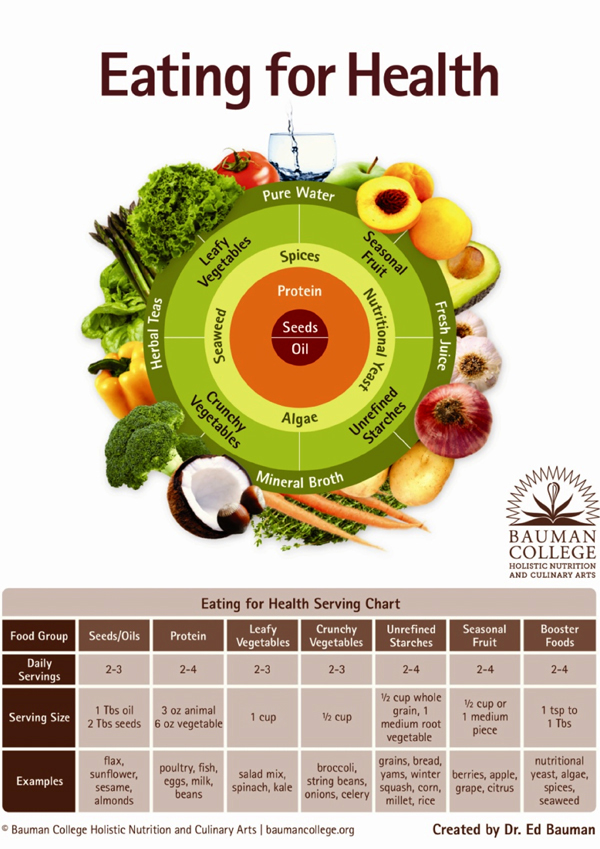
Benefits of Eating for Health staple foods |
|||
Food |
Sources |
Potential benefit |
Notes |
Protein cold-water fish
Pastured eggs
|
Salmon, tuna, sardines, Pacific halibut, Atlantic mackerel, anchovies, sablefish/black cod
From hens that eat grasses, bugs and grains
|
PUFAs –Omega-3 fatty acids (DHA/EPA) Support maintenance of eye health and mental function. People consuming fatty fish 1 - 2x/week (~250 mg EPA+DHA) have reduced risk of CHD death and sudden cardiac death (2).
Contain 3- 6x the vitamin D content of regular supermarket eggs, 66% more vitamin A, 3x more vitamin E, 7x more beta carotene, 2x more omega-3 fats, 33% less cholesterol, and 25% less saturated fat (5). |
Farmed fish (esp. salmon) generally have higher levels of fat overall, w/lower omega-3:6 ratios than optimal, due to use of soy, canola, and corn oils in feed (most of which is genetically modified and rich in pesticide residues) (3,4).
Find these, if you can, from local people with hens, or purchase them from natural foods grocery stores. They’ll be designated as ‘pastured’.
|
Fat
Avocado |
Almonds, brazil nuts, cashews, pecans, pine nuts, pistachios, walnuts; flax, chia, hemp, sesame, sunflower, pumpkin seeds
Haas, Fuerte, most common varieties |
Tree nuts contain bioactive constituents that can reduce oxidative stress and inflammation: vitamin E, folate, magnesium, protein, polyphenols, essential fatty acids, and fiber; help protect heart health, blood sugar control and cognitive function (6,7,8,9,10) Flaxseed: Contains plant-based omega-3 fats, beneficial dietary fibers, & lignans (a polyphenol). Combined with hypocaloric, low-carbohydrate diet, flaxseed (compared to placebo) shown to reduce blood pressure and levels of inflammatory markers in men with cardiovascular risk factors (11).
Rich in fibre, potassium, magnesium, vitamin E, phytonutrients and monounsaturated, polyunsaturated, and saturated fats. Clinical studies demonstrate beneficial effects on cardiovascular health and weight management (12). |
Nuts are best prepared by soaking overnight in lightly salted water and dehydrating at about 115° F until crispy. This helps eliminate factors that impede bioavailability of nutrients. If in a hurry, lightly toasting them at 250° F until crispy will also be helpful as well as delicious. Seeds can be lightly toasted (250° F, until aromatic. Flax, chia, and hemp seeds, due to their omega-3 content, should not be heated. Because they tend to be small and difficult or impossible to chew, seeds should be ground prior to eating.
Delicious sliced on salads, fish, sandwiches. Mash and add lemon juice or salsa for guacamole. Makes delicious base for creamy salad dressings and for dairy-free desserts.
|
Carbohydrates Non-starchy vegetables Starchy vegetables
Fruit
Whole grains
|
Beta-carotene-containing veggies and fruits: carrots, dark leafy greens such as spinach, kale,
dandelion and collards), pumpkin, winter squashes, sweet potatoes, cantaloupe
Whole brown rice, rye, wheat, corn, quinoa, amaranth, millet, teff.
|
Meta-analysis: 3-5 servings/day of whole grains contributes to improved glucose control, improved body composition, and reduced CVD risk factors in healthy people and those at risk from type-2 diabetes (16). |
Diets high in carotenoids (incl. beta-carotene) may help prevent certain cancers and cardiovascular disease; high-dose beta-carotene supplements prevent neither of these and may be associated with increased risk of cancer in susceptible individuals (14). High-dose beta-carotene supplementation increases risk of lung cancer in smokers (15). Soaking several hours before cooking or fermenting reduces antinutrients, such as phytic acid. Sourdough baking/fermentation decreases glucose and insulin response to breads (17). |
Booster foods Fermented foods (vegetables, fruits, dairy, grains)
Micro-algae
Vinegar
Turmeric / curcumin (spice)
|
Raw sauerkraut, kim chi, beet kvass, brined pickles, raw chutney and salsa; yogurt, kefir; soured whole grains or sourdough breads
Sea vegetables, aka seaweed
Raw apple cider vinegar
Turmeric: whole fresh root or dried powder
|
Improves digestive function. Can reduce inflammation; inhibit cholesterol absorption and aid its removal from the liver; enhance circulating vit. D levels (18,19,20). Can provide therapeutic changes to gut bacteria that help prevent development of diabetes (21). Natural pigments in sea vegetables, including chlorophyll, exhibit anticancer, anti-inflammatory, anti-obesity, anti-angiogenic, and neuro-protective activities (23).
Reduces rise in blood sugar after meals; excellent for those at risk for type 2 diabetes (24).
Turmeric’s use as medicine dates to at least 4,000 years ago. Current research demonstrates benefit in fighting infections and cancer, reducing inflammation, treating digestive disorders, and in helping ameliorate depression (25). |
Each serving of live culture foods can contain billions to trillions of beneficial bacteria (far more than probiotic supplements), plus enzymes. Additionally, other nutrients, such as vitamins, minerals, and phytochemicals are enhanced through the fermentation process (22).
Types include arame, hijiki, wakame, nori and dulse.
Take 1-2 tsp in a small glass of water right before eating to achieve this effect.
Use turmeric in curries; also delicious as addition to herbal chai teas.
Therapeutically, C3 curcumin extract is powerful and shown to be effective.
|
Beverages Green tea
Pomegranate juice
|
Loose or bagged tea leaves
Whole pomegranates, which can be eaten whole or juiced.
|
Green tea and its active ingredient, epigallocatechin-3-gallate (EGCG), have been shown to improve symptoms and reduce the pathology in some animal models of auto-immune diseases (26). 16 oz/day fresh juice shown to reduce blood pressure, stress hormones, and insulin resistance in people at high risk for cardiovascular disease (27). |
Green tea does contain caffeine but comes in decaffeinated form for those who are sensitive.
Dilute all fresh fruit juices 50% with water to reduce sugar -load. Use pomegranate seeds on salads, fish and seafood, and in chicken dishes; juice in vinaigrettes and sauces.
|
The Four levels of eating
To differentiate Eating for Health from other food systems, Dr. Bauman developed the Four levels of eating, a concept derived from observations of clients drawn from his many years of clinical practice. Each level has its place and reflects the awareness and maturity of a person’s overall pattern of eating, a daily act that affords us abundant choice and delight but is often done with little thought. Exercising greater levels of consideration, awareness and discrimination around food selection can help create greater accountability and responsibility for one’s own health.
Level one: eating for pleasure
This level is an immature and impulsive approach to eating, aimed at maximising pleasure and minimising emotional pain. Eating at this level is for immediate gratification. ‘I ate it because it tasted good’, ‘I ate it because it was there’, and ‘I ate as much of it as I wanted to’, are hallmarks of this stage.
Refined sugar and flour, industrially produced meats and dairy and poor quality fats are in this category. Food choices typically reflect what we were fed as young children to reward our quiet and appease us, such as ice cream, cookies and milk, candy and soft drinks. Excessive coffee, alcohol or refined flour products and sweets are also Level one eating. Emotional eating, which often means compulsive over-eating, is a Level one adaptation to pain, tension and stress.
Level two: eating for energy
Blood sugar regulation drives one’s food choices at this level. We choose substantial foods that allay hunger. The goal is to fill up and not have to eat again for three to four hours. In Level Two, carbohydrates become less refined; breads may have some whole wheat in them, but are still highly processed. Fast-foods like burgers and burritos are common choices. Little concern is placed on the quality of the food, the likely nutrient loss due to processing, possible pesticide residues, environmental toxins or added hormones, antibiotics, colouring and artificial flavours. Quickly accessible foods, such as peanut butter, breads, pastas, chips and pizza are common Level two foods. Fresh fruits and vegetables play a minimal role in the diet at this stage. Level two eaters are typically unconcerned with the ecological impact of their food choices.
While filling and sometimes satisfying, Level two eating is unsustainable for most people and will eventually lead to serious, chronic degenerative conditions in middle-age, if not sooner.
Level three: eating for recovery
The inevitable cumulative effects of Level one and Level two eating are poor body composition — frequently obesity — and diminished energy, health and brightness of mood. People experiencing these effects often go on a diet formulated by someone else that organises foods into good and bad categories and limits quantities. It may or may not emphasise high-quality, organic foods. Examples of Level three eating are diet-books that promise quick and lasting weight-loss.
The benefits of such diets are typically short-lived. There is an immediate positive effect from eating fewer refined and processed foods, but then we reach a point of diminishing return. The diet is no longer satisfying and no longer producing the promised effects. The tendency then is to stay with the rigid, reductionist approach even longer or to slip back to Level one or Level two eating patterns.
This is a more mature approach than the first two levels, but it can be tiresome, judgmental and sometimes supplement-driven. It can also lead to poorer health, as recommendations are geared to the general public, not to individual needs. Food choices for Level one through three are based on what is readily available in the market-place or what is seen in advertisements.
Level four: Eating for Health
The goal of this level is lifelong learning about optimum nutrition, the healing effects of foods, self-awareness concerning food choices and eating behaviours and an aesthetic and spiritual approach to the culinary arts. It shares some qualities with Level three, but allows for more personal choice, variety, seasonality and individuality according to one’s personal needs, tastes, ethnic origin and commitment level.
Food choices at Level four are not made by formula, but rather by discerning what the body needs and what the best available choices are at a given time. At this level, we choose among a wide variety of healthful, organic foods, as well as a variety of dietary patterns. We exercise moderation in the amount of food we eat and take more time and care in its preparation and presentation. Food is understood and appreciated as an instrument of personal healing and sharing with the community. Nourishing ourselves becomes a wise, mature and loving act of awareness cultivated through daily practice. At this level of eating, the concept of S.O.U.L. food becomes important. This concept suggests that produce be as Seasonal as possible; all foods be Organic as much as possible, Unrefined, and as Locally grown as possible. Choosing S.O.U.L. foods is a powerful tool for ensuring fresh foods with high nutrient-density and the acronym reminds us that eating provides not only good nutrition but spiritual nourishment as well.
Food synergy
Consistent with the idea of nutrition heroes and Level Four eating is the idea that nutrients from food have different effects in the body than do nutritional supplements and provide us with greater health benefits. This concept is slowly growing as a subject of scientific enquiry, though due to the simpler nature of testing individual nutrients in tightly controlled experiments, we still have much to learn. Nonetheless, what is currently being demonstrated (28) is what Eating for Health has maintained through the years: 1) we still have much to learn concerning the full complement of nutrient constituents of foods; new nutrients are being discovered on a regular basis, therefore a diverse intake of nutrient-rich foods is the best way to get the most nutrients; 2) nutrients in food enter our bodies in context, i.e., in balanced combinations in a whole food’s matrix, and the body knows how to deal with them through digestion, metabolism and absorption; 3) the food matrix allows for a timed release of nutrients rather than a large bolus from a supplement, which can overwhelm the body; and 4) the body can recognise the difference between a non-identical synthetic nutrient and its biologically natural form.
In support of this, studies have demonstrated, for instance, that whole foods such as apples, brassica vegetables and tomatoes have a greater anti-proliferative effect on cancer cells than do individual isolated nutrients or mixes of nutrients (29). Similarly, it has been shown that a high intake of dietary antioxidant foods, but not their supplemental counterparts, reduced DNA damage in a group of radiation-exposed individuals (30). Because foods vary in their nutrient content according to variety, season and the quality of their own food-supply, (31) suggest that the best nutrient supplement is a diet composed of diverse whole foods.
References
1. Moss M. Salt sugar fat. New York: Random House; 2013.
2. Mozaffarian D, Lemaitre RN, King IB, Song X, Huang H, Sacks FM, et al. Plasma phospholipid long-chain ù-3 fatty acids and total and cause-specific mortality in older adults: A cohort study [PDF]. Ann Intern Med. [Online] 2013; 158(7): 515-525. Available from: doi:10.7326/0003-4819-158-7-201304020-00003 [Accessed 30th November 2015].
3. Nichols PD, Glencross B, Petrie JR, Singh SP. Readily available sources of long-chain omega-3 oils: Is farmed Australian seafood a better source of the good oil than wild-caught seafood? [Full text]. Nutrients. [Online] 2014; 6(3), 1063–79. Available from: doi:10.3390/nu6031063 [Accessed 30th November 2015].
4. Hossain MA. Fish as source of n-3 polyunsaturated fatty acids (PUFAs): Which one is better — farmed or wild? [Full text]. Advance J Food Sci Technol. 2011; 3(6): 455-66.
5. Organic Consumers Association (OCA). Free-range eggs contain more vitamin D according to Mother Earth News Study. [Online] 2009; retrieved from http://www.organiccon sumers.org/articles/article_17169.cfm [Accessed 30th November 2015].
6. Hasani-Ranjbar S, Jouyandeh Z, Abdollahi M. A systematic review of anti-obesity medicinal plants - An update [Full text]. J Diabetes Metab Disord, [Online] 2013; 12(1):28. Available from: doi:10.1186/2251-6581-12-28 [Accessed 30th November 2015].
7. Urpi-Sarda M, Casas, R, Chiva-Blanch G, Romero-Mamani ES, Valderas-Martínez P, et al. Virgin olive oil and nuts as key foods of the Mediterranean diet effects on inflammatory biomarkers related to atherosclerosis [Abstract]. Pharmacol Res. [Online] 2012; 65(6): 577-83. Available from: doi:10.1016/j.phrs.2012.03.006 [Accessed 30th November 2015].
8. Carey AN, Poulose SM, Shukitt-Hale B. The beneficial effects of tree nuts on the aging brain [PDF]. Nutr Aging.[Online]2012; 1: 55-67. Available from: doi:10.3233/NUA-2012-0007 [Accessed 30th November 2015].
9. Ros E. Nuts and novel biomarkers of cardiovascular disease [Full text]. Am J Clin Nut. [Online] 2009; 89(5): 1649S-56S. Available from: doi:10.3945/ajcn.2009. 26736R [Accessed 30th November 2015].
10. Hu FB, Bronner L, Willett WC, Stampfer MJ, Rexrode KM, Albert CM, et al. Fish and omega-3 fatty acid intake and risk of coronary heart disease in women [Abstract]. JAMA 2002; 287(14): 1815-21.
11. Cassani RS, Fassini PG, Silvah JH, Lima CM, Marchini, J.S. Impact of weight loss diet associated with flaxseed on inflammatory markers in men with cardiovascular risk factors: A clinical study [PDF]. Nutr J, [Online] 2015; 14:5. Available from: doi:10.1186/1475-2891-14-5 [Accessed 30th November 2015].
12. Dreher ML, Davenport AJ. Haas avocado composition and potential health effects [Full text]. Crit Rev Food Sci Nutrition. [Online] 2013; 53(7): 738-50. Available from: doi:10.1080/10408398.2011.556759 [Accessed 30th November 2015].
13. Drake VJ. Carotenoids: Alpha-carotene, beta-carotene, beta-cryptoxanthin, lycopene, lutein, and zeaxanthin. [Online] 2009; retrieved from http://lpi.oregonstate.edu/infocenter/phytochemicals/carotenoids/#disease_prevention [Accessed 30th November 2015].
14. Ibid. [Accessed 30th November 2015].
15. Druesne-Pecollo N, Latino-Martel P, Barrandon E, Bertrais S, Galan P, Hercberg S. Beta-carotene supplementation and cancer risk: A systematic review and meta-analysis of randomized controlled trials [Full text]. Int’l J Cancer. [Online] 2010; 127 (1): 172–84. Available from: doi:10.1002/ijc.25008 [Accessed 30th November 2015].
16. Ye EQ, Chacko SA, Chou EL, Kugizaki M, Liu S. Greater whole-grain intake is associated with lower risk of type 2 diabetes, cardiovascular disease, and weight gain [Full text]. J Nutr. [Online] 2012; 142(7): 1304-13. Available from: doi:10.3945/jn.111.155325 [Accessed 30th November 2015].
17. Liljeberg, HG, Lönner CH, Björck IM. Sourdough fermentation or addition of organic acids or corresponding salts to bread improves nutritional properties of starch in healthy humans [Full text]. J Nutr. 1995; 125(6): 1503-11.
18. Jones, ML, Martoni CJ, Prakash S. Oral supplementation with probiotic L. reuteri NCIMB 30242 increases mean circulating 25-hydroxyvitamin D: A post hoc analysis of a randomized controlled trial [Abstract]. J Clin Endocrinol Metab. [Online] 2013; 98(7): 2944-55. Available from: doi:10.1210/jc.2012-4262 [Accessed 30th November 2015].
19. Jones ML, Martoni CJ, Parent M, Prakash S. Cholesterol-lowering efficacy of a micro-encapsulated bile salt hydrolase-active Lactobacillus reuteri NCIMB 30242 yoghurt formulation in hypercholesterolaemic adults [Abstract]. Br J Nutr. [Online] 2012; 107(10): 1505-13. Available from: doi:10.1017/S00071 14511004703 [Accessed 30th November 2015].
20. Yoon HS, Ju JH, Lee JE, Park HJ, Lee JM, Shin HK, et al. The probiotic Lactobacillus rhamnosus BFE5264 and Lactobacillus plantarum NR74 promote cholesterol efflux and suppress inflammation in THP-1 cells [Abstract]. J Sci food Agric. [Online] 2015; 93(4): 781-7. Available from: doi: 10.1002/jsfa.5797 [Accessed 30th November 2015].
21. Ray MK, Ray SA. Can modification of the gut microbiome with diet affect the onset and pathogenesis of diabetes? [PDF]. AJDM [Online] 2013; 21(1): 7-10. Available at http://www.africanjournalofdiabetes medicine.com/articles/may_2013/AJDM %20May%207–10.pdf [Accessed 30th November 2015].
22. Swain MR, Anandharaj M, Ray, RC, Parveen Rani R. Fermented fruits and vegetables of Asia: A potential source of probiotics [Full text]. Biotech Res Int’l. [Online] 2014; 250424. Available from: doi:10.1155/2014/250424 [Accessed 30th November 2015].
23. Pangestuti R, Kim S-E. Biological activities and health benefit effects of natural pigments derived from marine algae [Abstract]. J Func Foods. [Online] 2011; 3(4): 255–66. Available from: doi:10.1016/j.jff.2011.07.001 [Accessed 30th November 2015].
24. Johnston, CS, Quagliano S, Loeb S. Therapeutic effect of daily vinegar ingestion for individuals at risk for type 2 diabetes [PDF]. FASEB J, [Online] 2013; 27.(Meeting Abstract Supplement) 1079.56. Full study available at https://bragg.com/products/PDFs/ASU% 20Bragg%20ACV%20Drink% 20Study pdf [Accessed 30th November 2015].
25. Ehrlich SD. Turmeric. [Online] 2011; retrieved from http://umm.edu/health/medical/altmed/herb/turmeric [Accessed 30th November 2015].
26. Wu D, Wang J, Pae M, Meydani SN. Green tea EGCG, T cells, and T cell-mediated autoimmune diseases [Abstract]. Mol Aspects Med. 2012; 33(1):107-18.
27. Tsang C, Smail NF, Almoosawi S, Davidson I, Al-Dujaili EAS. Intake of polyphenol-rich pomegranate pur juice influences urinary glucocorticoids, blood pressure and homeostasis model assessment of insulin resistance in human volunteers [PDF]. J Nutsr Sci. [Online] 2012; 1(e9): 1-9. Available from: doi: 10.1017/jns.2012.10 [Accessed 30th November 2015].
28. Jacobs DR, Gross MD, Tapsell LC. Food synergy: An operational concept for understanding nutrition [PDF]. Am J Clin Nutr. [Online] 2009; 89(5): 1543S-1548S. Available from: doi:10.3945/ajcn.2009. 26736B [Accessed 30th November 2015].
29. Ibid.
30. Yong LC, Petersen MR, Sigurdson, AJ, Sampson LA, Ward EM. High dietary antioxidant intakes are associated with decreased chromosome translocation frequency in airline pilots [Full text]. Am J Clin Nutr. [Online] 2009; 90(5): 1402–10. Available from: doi:10.3945/ajcn.2009.28207 [Accessed 30th November 2015].
31. Jacobs DR, Gross MD, Tapsell LC. Food synergy: An operational concept for under-standing nutrition [PDF]. Am J Clin Nutr. [Online] 2009; 89(5): 1543S-1548S. Available from: doi:10.3945/ajcn.2009.26736B [Accessed 30th November 2015].
Ed Bauman M.Ed., Ph.D. is the President and founder of Bauman College: Holistic Nutrition and Culinary Arts (www.baumancollege.org); Jodi Friedlander NC is a nutrition writer, researcher and educator.
Share with us (Comments,contributions,opinions)
When reproducing this feature, please credit NAMAH,and give the byline. Please send us cuttings.




